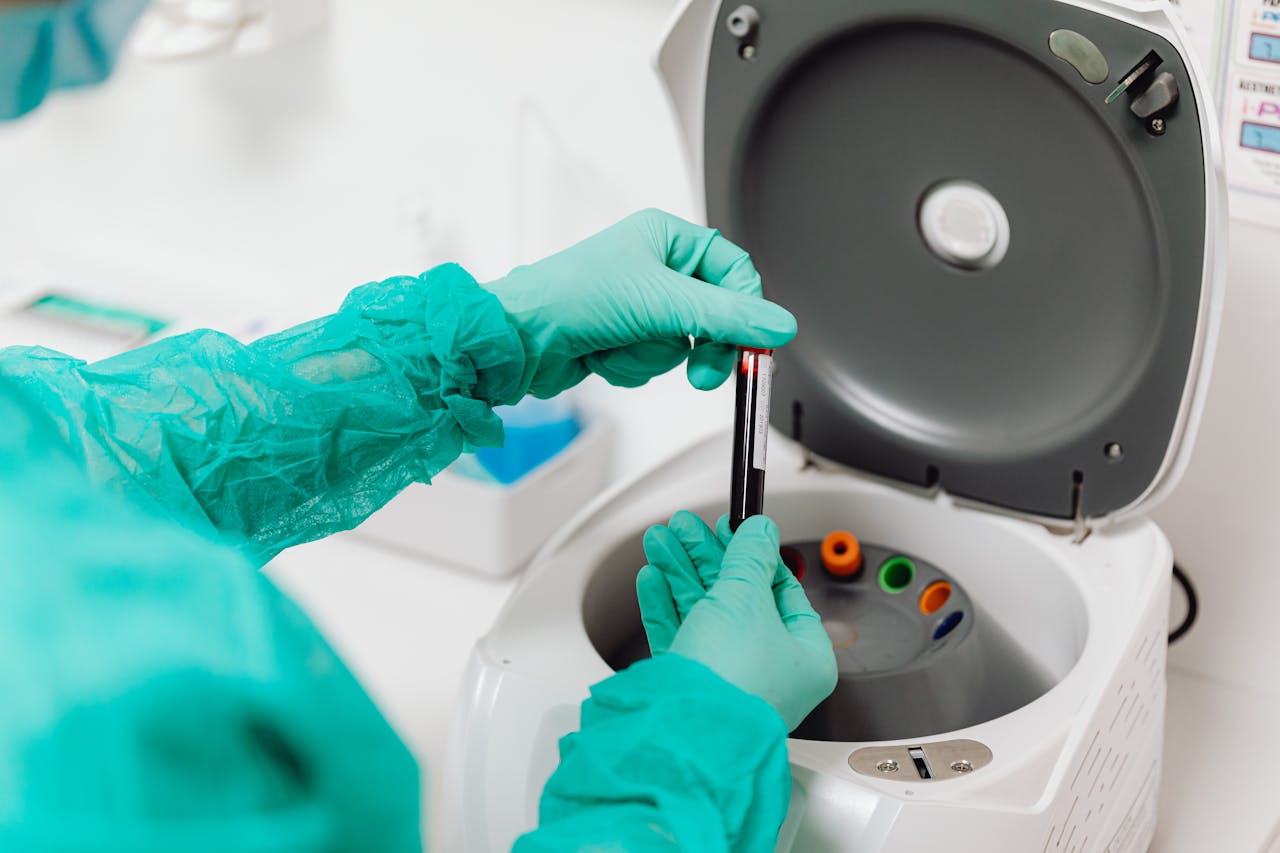
A centrifuge is an essential piece of laboratory equipment, used for separating substances of varying densities through centrifugal force. Whether it’s separating blood components or isolating particles in a solution, the centrifuge plays a vital role in scientific and medical research. This article explains what a centrifuge in laboratory use is, its applications, and guidelines on how to operate a centrifuge effectively.
Understanding the Basics of a Laboratory Centrifuge
A centrifuge is a mechanical device that spins samples at high speeds, generating a force that causes denser substances to move outward while lighter substances remain closer to the centre. This method is invaluable in laboratories for analysing samples with precision.
Key Components of a Centrifuge
- Rotor: The part where sample tubes are placed.
- Motor: Powers the spinning action.
- Control Panel: Allows users to set speed, time, and temperature.
- Safety Lid: Prevents accidents during operation.
Common Applications of a Laboratory Centrifuge
The versatility of a centrifuge makes it indispensable in various fields:
Medical Research
- Separation of blood into plasma, red cells, and white cells.
- Preparing urine samples for microscopic analysis.
Biological Studies
- Isolating DNA or RNA from cell samples.
- Separating proteins and organelles.
Industrial Uses
- Purification of chemicals.
- Quality control in food and beverage production.
How to Operate a Centrifuge Safely
Operating a centrifuge requires attention to detail and adherence to safety protocols. Improper use can lead to accidents or compromised results. Here is a detailed guide on how to operate a centrifuge efficiently and safely:
Step 1: Inspect the Equipment
- Check for visible damage to the rotor or motor.
- Ensure the tubes are clean and undamaged.
Step 2: Prepare the Samples
- Balance the samples by ensuring equal weight on opposite sides.
- Use proper tube caps to prevent leakage.
Step 3: Set Operational Parameters
- Adjust the speed (RPM) based on the type of sample.
- Set the timer and any required temperature controls.
Step 4: Load and Secure the Rotor
- Place tubes securely in the rotor.
- Ensure the safety lid is firmly closed before starting.
Tips for Effective Centrifuge Use
Balancing the Rotor
- Always balance tubes with equal weight to avoid damaging the rotor or compromising results.
- Use a balance tube if you have an odd number of samples.
Avoid Overloading
- Follow the manufacturer’s guidelines regarding rotor capacity.
- Distribute the load evenly.
Monitor Operations
- Avoid leaving the centrifuge unattended during high-speed operations.
- Listen for unusual noises that may indicate a problem.
Types of Centrifuges in Laboratories
There are various types of centrifuges tailored to different applications:
Microcentrifuge
- Ideal for small-volume samples, typically used in molecular biology.
Refrigerated Centrifuge
- Maintains low temperatures for sensitive samples, such as proteins or live cells.
Ultracentrifuge
- Operates at extremely high speeds, suitable for detailed molecular studies.
Clinical Centrifuge
- Common in hospitals and diagnostic labs for blood and urine tests.
Importance of Routine Maintenance
Routine maintenance ensures the longevity and efficiency of the centrifuge. Proper care minimises the risk of breakdowns and maintains accuracy in results.
Maintenance Tips
- Regular Cleaning: Wipe down the rotor and chamber after each use.
- Lubrication: Ensure moving parts are adequately lubricated.
- Calibration: Schedule professional calibration regularly.
Key Safety Precautions
Safety is paramount when using a laboratory centrifuge. Neglecting precautions can lead to accidents or equipment damage.
Common Safety Guidelines
- Do Not Exceed Speed Limits: Stay within the recommended RPM for your rotor.
- Secure the Lid: Always double-check that the lid is closed before operation.
- Avoid Overheating: Allow the motor to cool between runs if necessary.
Handling Spills
- Stop the machine immediately if a spill occurs.
- Clean the chamber with appropriate disinfectants.
Advancements in Centrifuge Technology
Modern centrifuges have advanced features, such as digital controls, automated balancing, and remote monitoring. These innovations enhance both safety and efficiency.
Features of Modern Centrifuges
- Digital Interfaces: Simplifies parameter settings.
- Automatic Shutoff: Adds a layer of safety in case of imbalance.
- Noise Reduction: Minimises operational noise for a better working environment.
Troubleshooting Common Centrifuge Problems
Problem: Unusual Noise During Operation
- Cause: Imbalanced rotor or incorrect tube placement.
- Solution: Stop the machine and rearrange the tubes properly.
Problem: Error Codes Displayed
- Cause: System malfunction or sensor issues.
- Solution: Refer to the user manual or contact the manufacturer.
Problem: Inconsistent Results
- Cause: Incorrect speed or imbalance.
- Solution: Review your settings and balance the samples carefully.
Why Choose the Right Centrifuge?
Investing in the right centrifuge ensures accurate and reliable results. Consider factors such as capacity, speed, and application when selecting a centrifuge for your laboratory.
Questions to Ask Before Purchasing
- What is the maximum speed required for your experiments?
- Do you need temperature control features?
- How many samples will you process at a time?
Conclusion
A centrifuge is an indispensable tool in laboratories, with applications ranging from medical diagnostics to biological research. By understanding what a centrifuge in laboratory use is and following proper operating guidelines, users can maximise efficiency while ensuring safety. Accretion Portal is dedicated to providing information and resources for safe and effective laboratory practices.





Leave a Reply